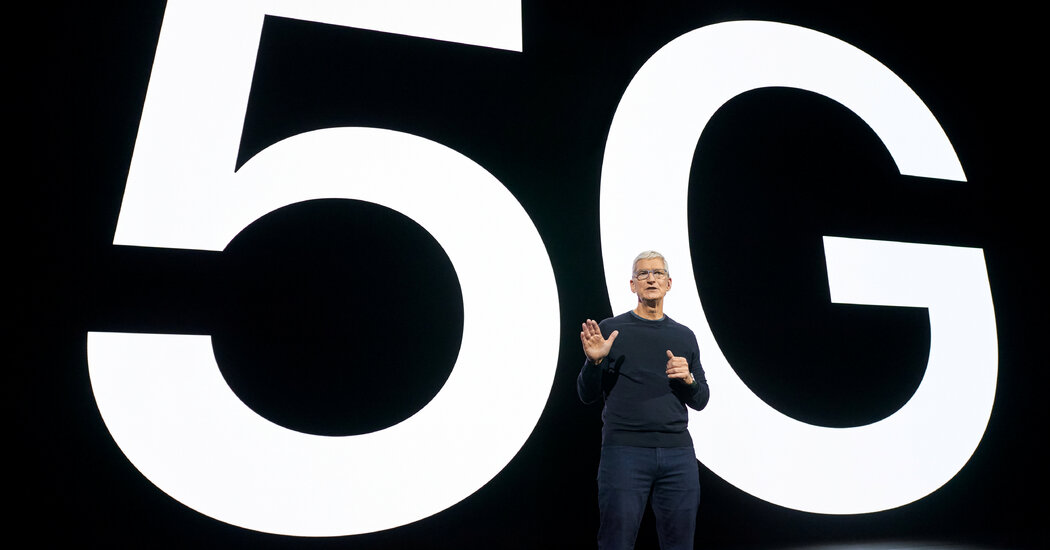Many of us are eagerly anticipating Apple’s new iPhones on Tuesday because they are expected to include a major new feature: 5G, for the fifth-generation cellular network.
Phones with 5G capability have been positioned as far better than our current devices. That’s because carriers like AT&T and Verizon have hyped 5G as a life-changing technology capable of delivering data speeds so fast that you can download a feature-length movie in seconds.
But tamp down your expectations, at least for now. In the near term, the new cellular technology probably won’t be a big leap forward from its predecessor, 4G. Instead, in most cases, 5G will only be incrementally faster, if at all.
Here’s what you need to know:
-
The much-hyped, ultrafast variant of 5G is known as “millimeter wave.” But its reach is limited right now. This flavor of 5G lets carriers transmit data at incredibly fast speeds. The catch? Its signals travel shorter distances, covering a park in New York but not a broad swath of the city, for example. It also has trouble penetrating obstacles like walls. So for now, the carriers are focusing its deployment in large spaces like sports stadiums and outdoor amphitheaters.
That’s good news if you enjoy livestreaming concerts or games. But it’s unlikely we will be attending those types of events anytime soon in this pandemic.
And because of the technical limitations, we are unlikely to see this ultrafast 5G deployed nationwide anytime soon, meaning we won’t be getting its incredible speeds in the vast majority of places.
-
Our cellular networks are broadly shifting to a version of 5G that is less exciting. Let’s call this vanilla 5G. Vanilla 5G will have speeds that are only slightly faster (roughly 20 percent faster) than current 4G networks. Its main benefit is that it will reduce a lag known as latency. When you do a web search on your phone, for example, the results show up after a lag that can often last hundreds of milliseconds. In theory, 5G technology will shave latency down to a few milliseconds.
That said, 5G networks are still in their early stages. So in some areas, it can be even slower than 4G to start.
That’s not to say 5G is not exciting. It’s expected to have a significant impact in the long term on how our technology works. The reduction in lag times could make virtual reality applications and online gaming work better. If all goes well, 5G could lay the groundwork for self-driving cars, which will need to be able to instantaneously talk to one another to avoid collisions.
(The New York Times on Tuesday announced a tech partnership with Verizon to explore how 5G connections could aid its journalism; The Times maintains editorial control of its storytelling.)
In the meantime, there may be improvements in Apple’s new iPhones that will affect you more than 5G. The devices are expected to be sped up with new processors and have a brand-new design and improved cameras. Those, along with the side benefit of 5G, would deliver a significant upgrade for people who have older 4G iPhones.
[ad_2]
Source link


